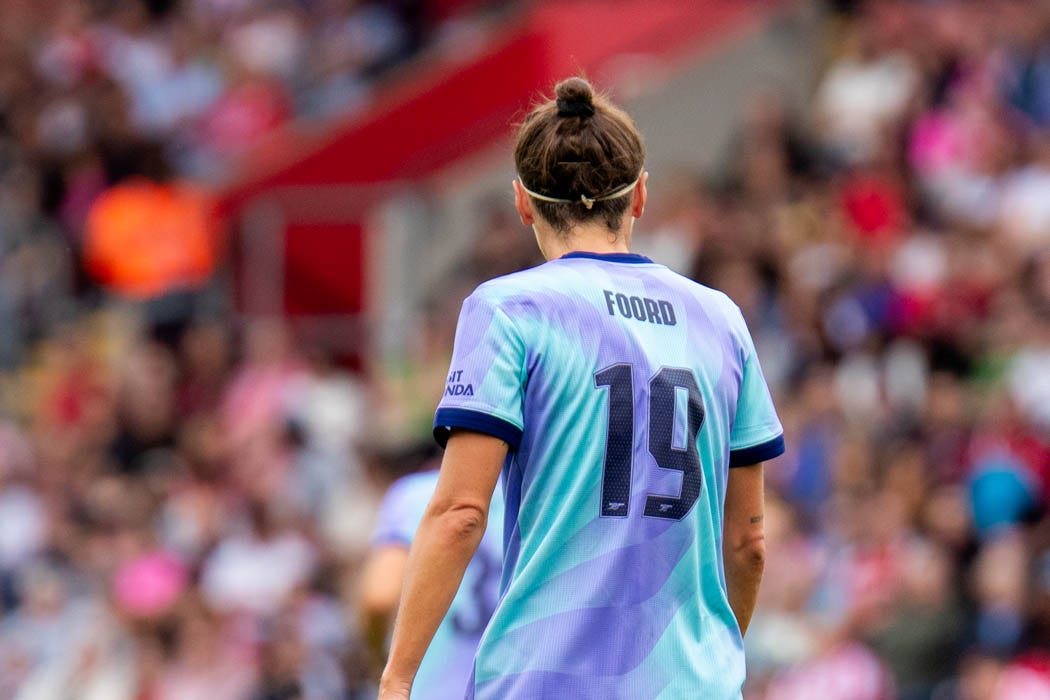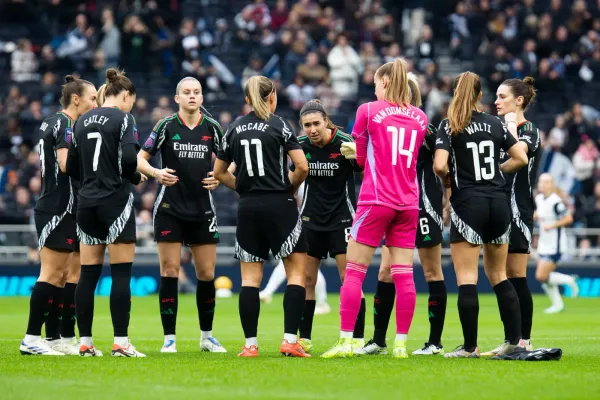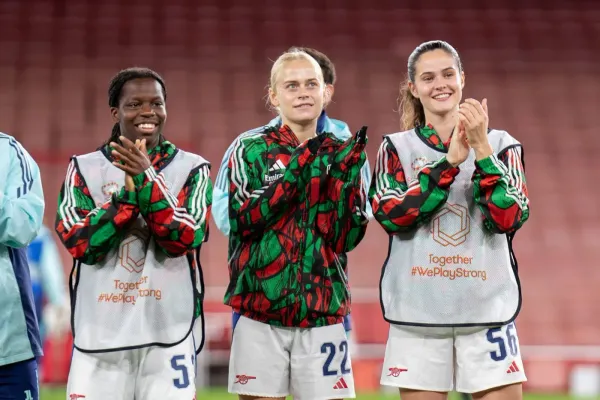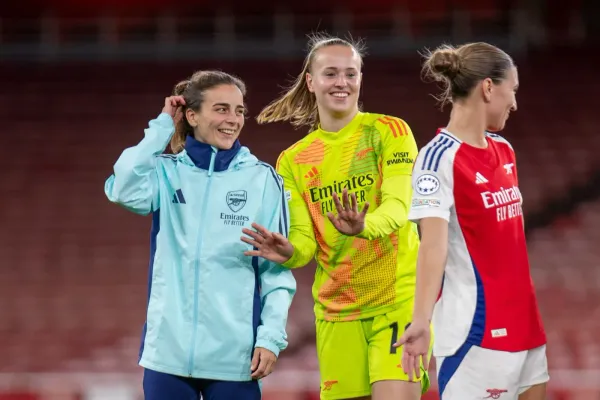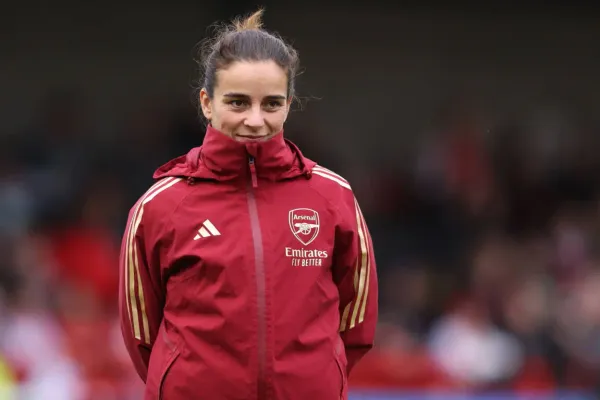A-Foord-ability
On how Caitlin Foord continues to make herself a crucial piece of the Arsenal jigsaw
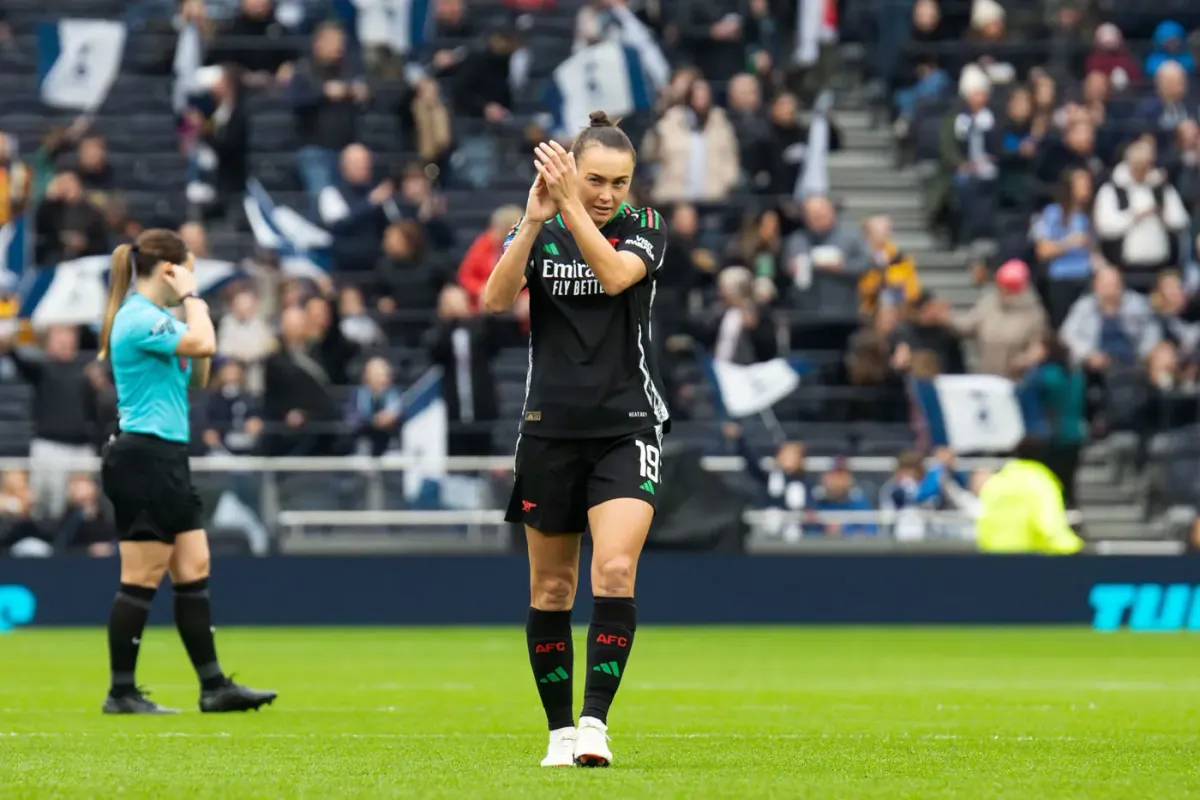
When Arsenal signed Mariona Caldentey from Barcelona this summer, many believed Caitlin Foord’s place in the team was the most under threat- and with fair cause. Foord has made the left-wing slot her own since signing for the club in January 2020. Prior to this season, she played 57 out of Arsenal’s 66 WSL games, 45 of those were starts. If we compress that timeline to the last two seasons, Foord played 41 of 44 WSL games with 36 of those as a starter.
During the pre-season tour of Washington DC in August, Arseblog News asked Jonas Eidevall which position he predominantly saw Mariona playing in. ‘When I have seen Mariona at her best in the national team and for Barcelona has been coming off the left and having that freedom to move between the lines and find the pocket. I know last season she played quite a bit in the 9 position and she can manage those positions, which is good, but the main idea is that she plays as a wide forward.’
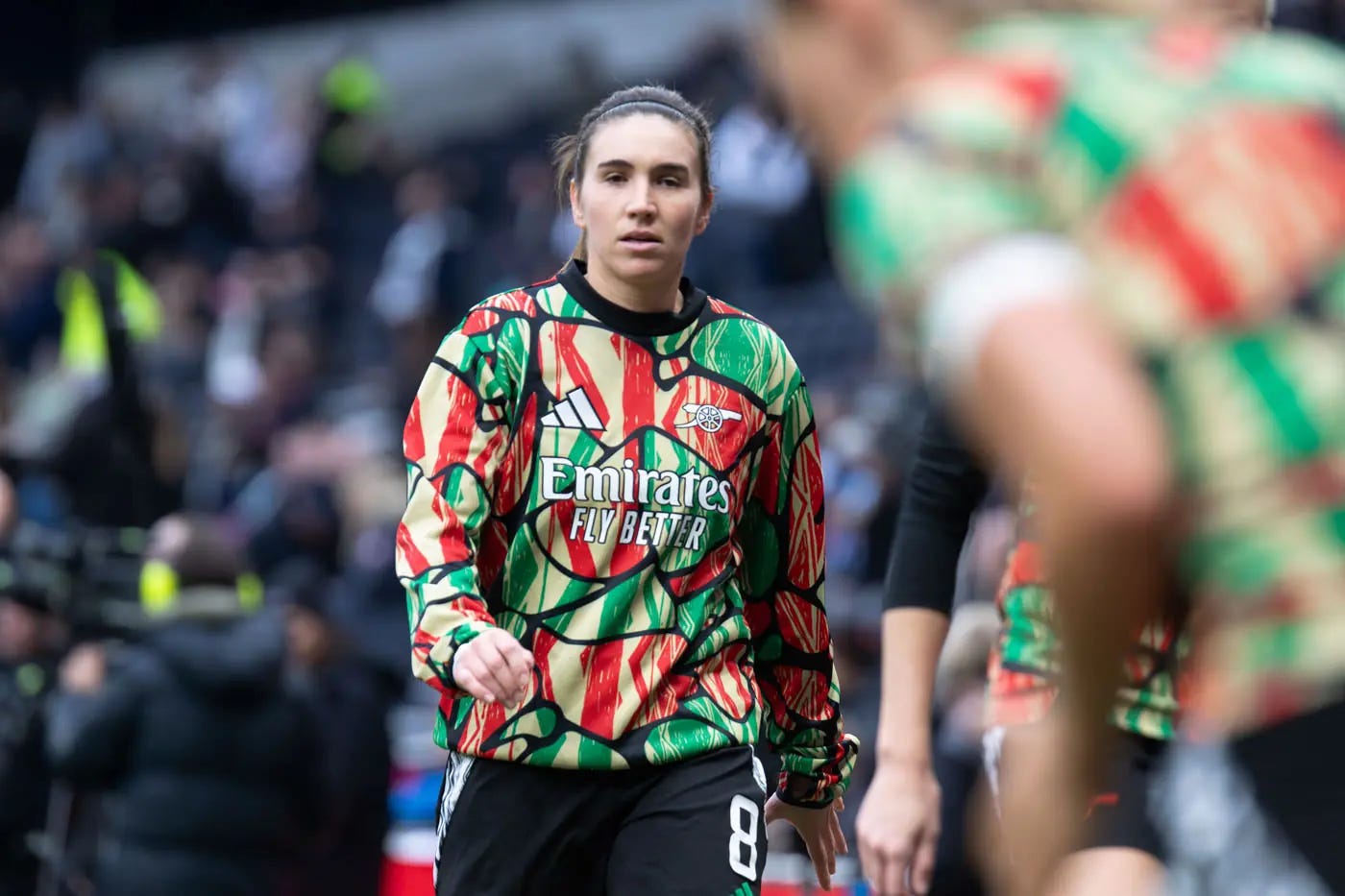
Given Beth Mead’s consistent level of productivity on the right side, it seemed as though Foord’s role was set to reduce. Not to the point of obscurity, obviously, but it seemed as though she might become a ‘finisher’ from the bench and / or a rotation option. Yet here we are eight games into the WSL season and Foord has seven starts. She has also started all four of Arsenal’s UWCL group games so far.
Far from being an impediment, Mariona’s arrival has actually made Foord’s skillset more important. Foord has played largely on the right this season as a counterbalance to Mariona, who plays nominally on the left but drifts in-field to play more as a left 10. In Renee Slegers’ refined 325 build-up shape, Katie McCabe pushes right up the left-hand side to become the left-winger, with Mariona as a right 10 and Maanum as a left 10.
Maanum’s output has also improved this season because Mariona has been able to drift inside and play alongside her as a dual 10. Too often last season, Maanum was isolated as a lone 10. That structure relies on a pair of wide players to really hold the width of the pitch and allow the interiors to get on the ball and create. Foord and McCabe have proved to be effective counterweights in that respect.
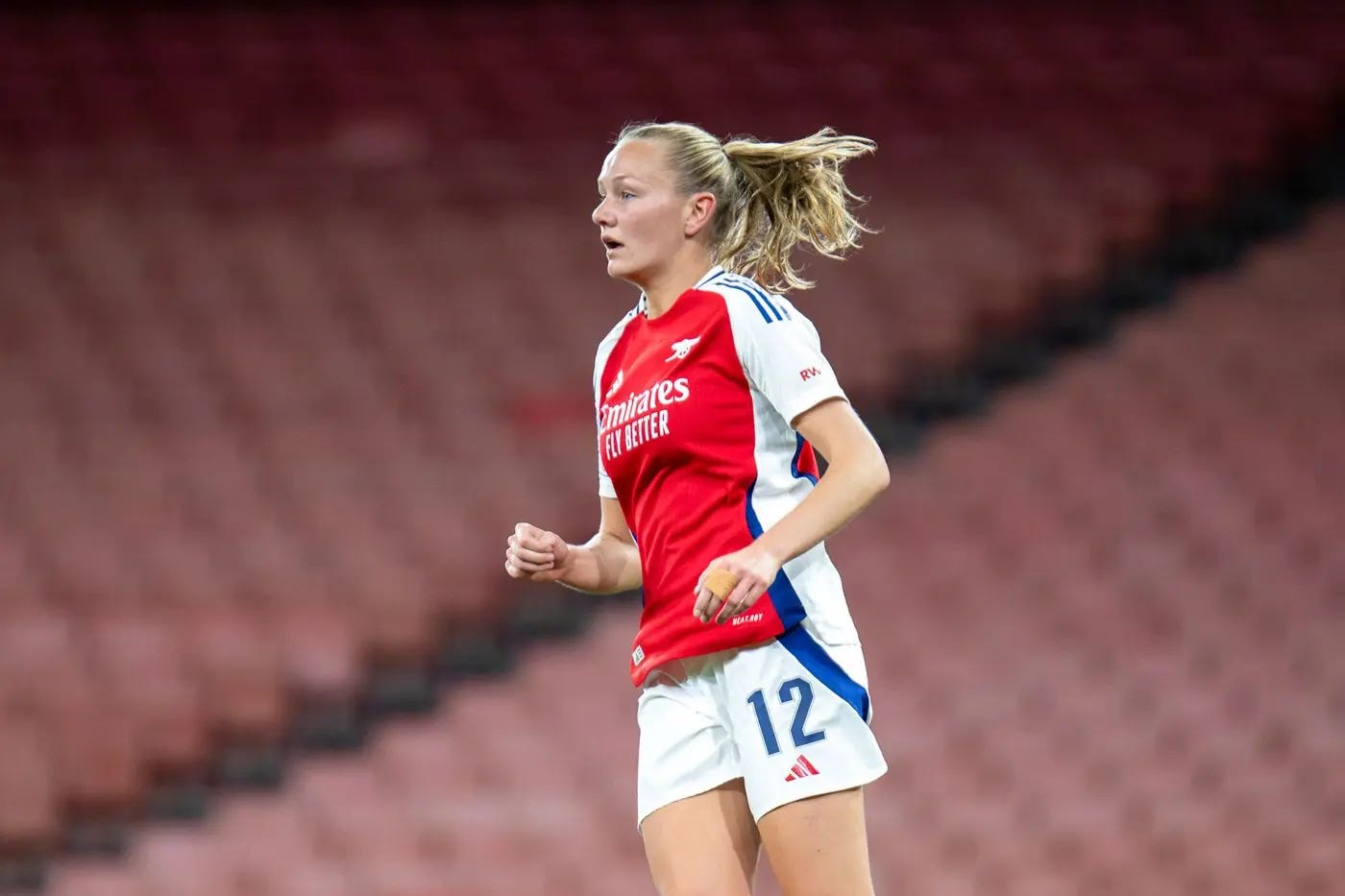
The fundamental difference is that Arsenal are playing with five attackers instead of four. Counterintuitively, the data shows you that Foord is doing less, in an on the ball sense, but she provides structure to the attack by holding width and she is also able to get on the end of moves better, especially when attacking the back post when play builds on the left.
Her number of shots, carries and attempted passes are all down on last season, but her XG is up, the average distance of her shots has also moved from 14.7 yards to 12.1. Having five attackers is spreading the build-up burden, too often last season Foord was isolated and doubled up on, she was being asked to do too much. A fifth attacker has helped her to be more efficient.
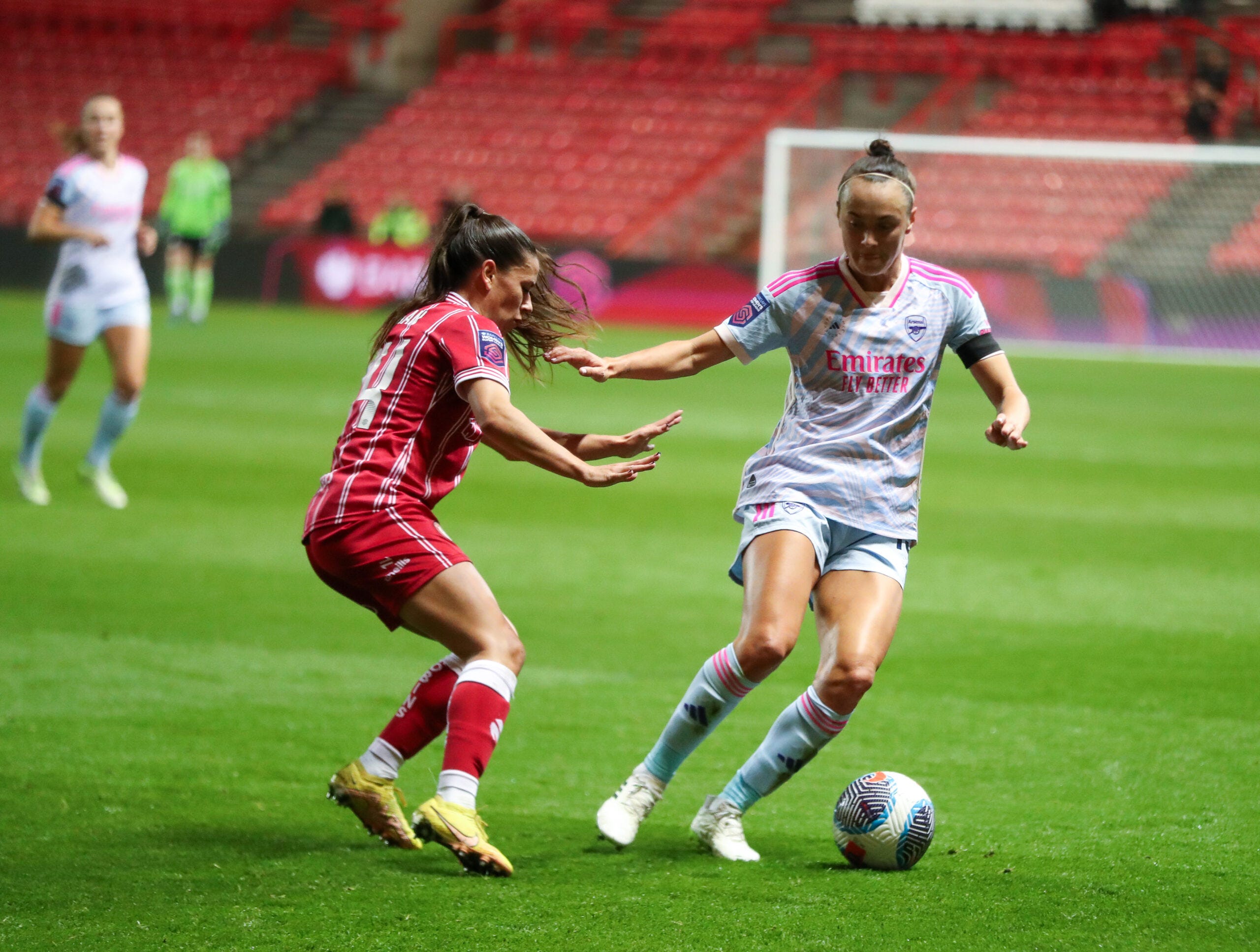
Her best goalscoring return in an Arsenal shirt was the 2020-21 season when she scored 10 WSL goals. (Since then, her goalscoring returns have been 4, 6 and 4). 2020-21 also represented her lowest number of attempted passes per 90 in a season, her lowest shot creation per 90 and her lowest number of touches per 90 by some distance. Foord played very much as a foil for Miedema that season and when she is at her best for the Matildas, she plays as a foil for Sam Kerr.
In many respects, the less her on-ball involvement the better. Not because she is bad on the ball, she is not. But the burden of beating several players before trying to get a cross in had become too much. Having Mariona and Maanum as dual 10s has lightened the load and enabled her to avoid detection, while her inclination to hold the width of the pitch allows Russo, Mariona and Maanum to orbit.
Likewise, Emily Fox is able to pop up in pretty central spaces and make underlapping runs because of the structural security Foord gives the team by holding width. Caitlin has played ahead of Beth Mead because, as yet, the mixture of Mead and Mariona has not provided the same structural blend. Mead also likes to come inside from the flank, which makes sense given her unerring ability to score and create goals. She is a striker turned winger, after all. But Mead and Mariona coming in-field has, thus far, made Arsenal a touch too narrow.
None of this is permanent either. When Mead was on the Ballon D’Or podium in 2022, the idea that she would not play every minute of every game for Arsenal would have been fanciful. Things change quickly in both directions and Arsenal could yet have a new coach with new ideas soon enough. But Foord is a strong example of how elite athletes respond to competition and Caitlin Foord has made herself too important not to play. It also repudiates the idea that managers need to hold players hands and guarantee them minutes, players need to force their way into contention, as Foord has done.
